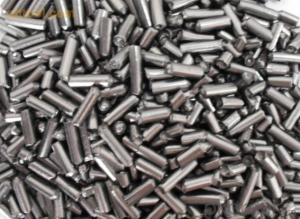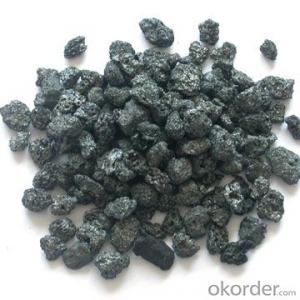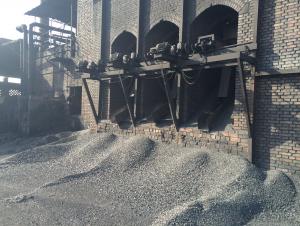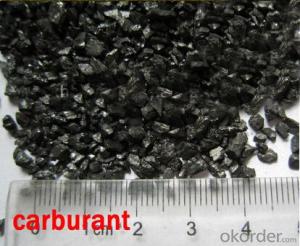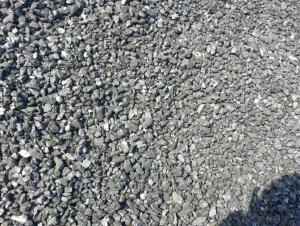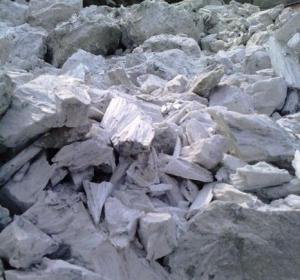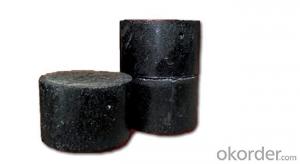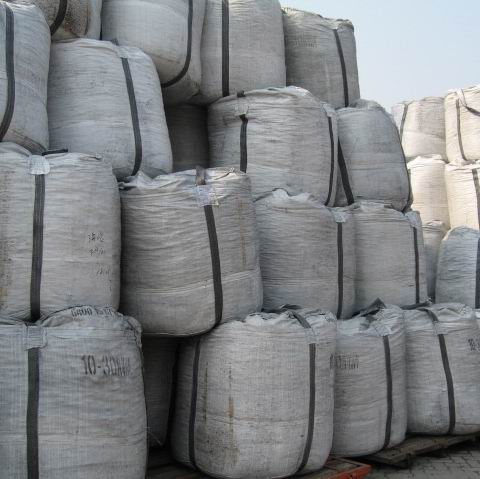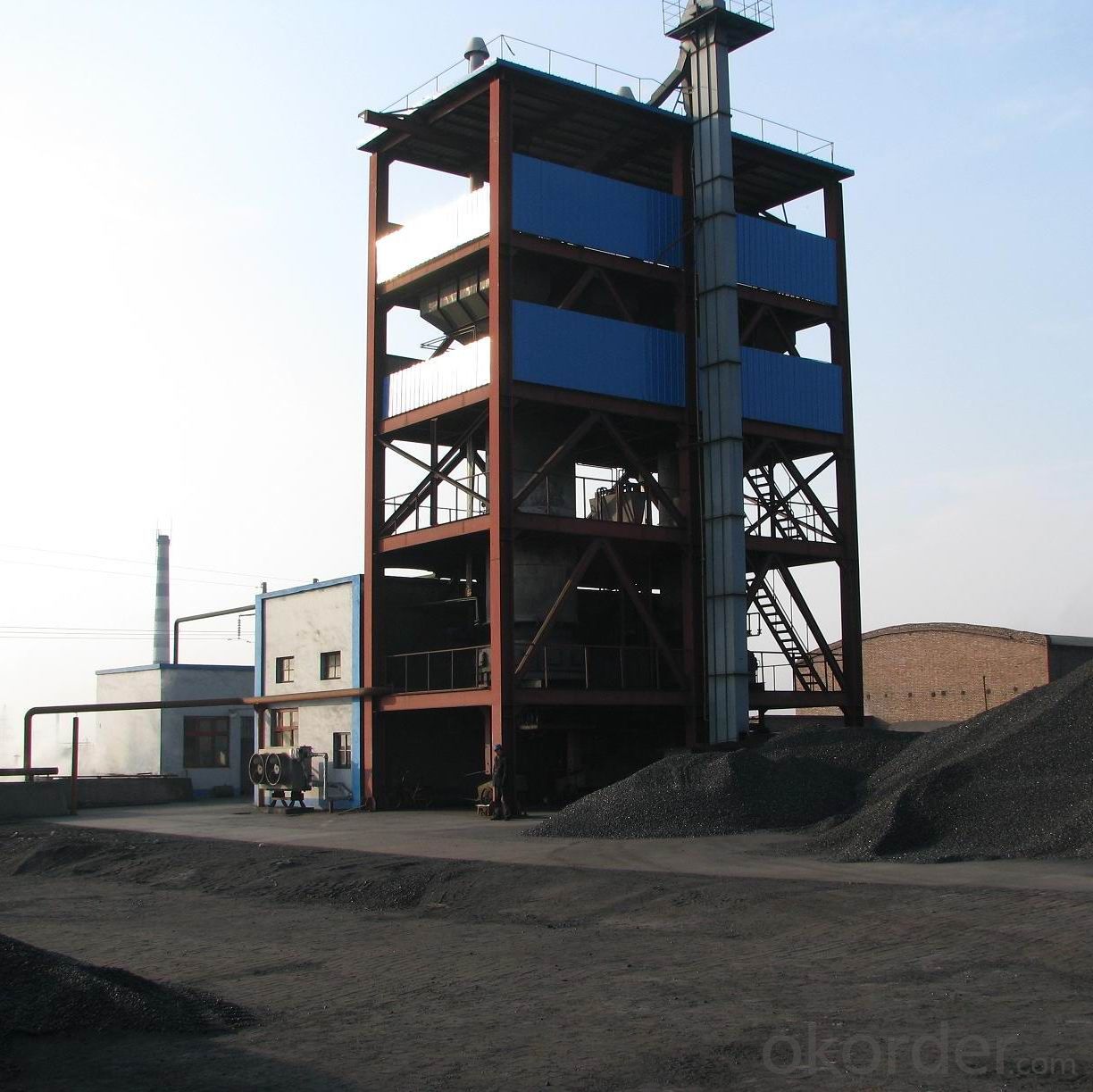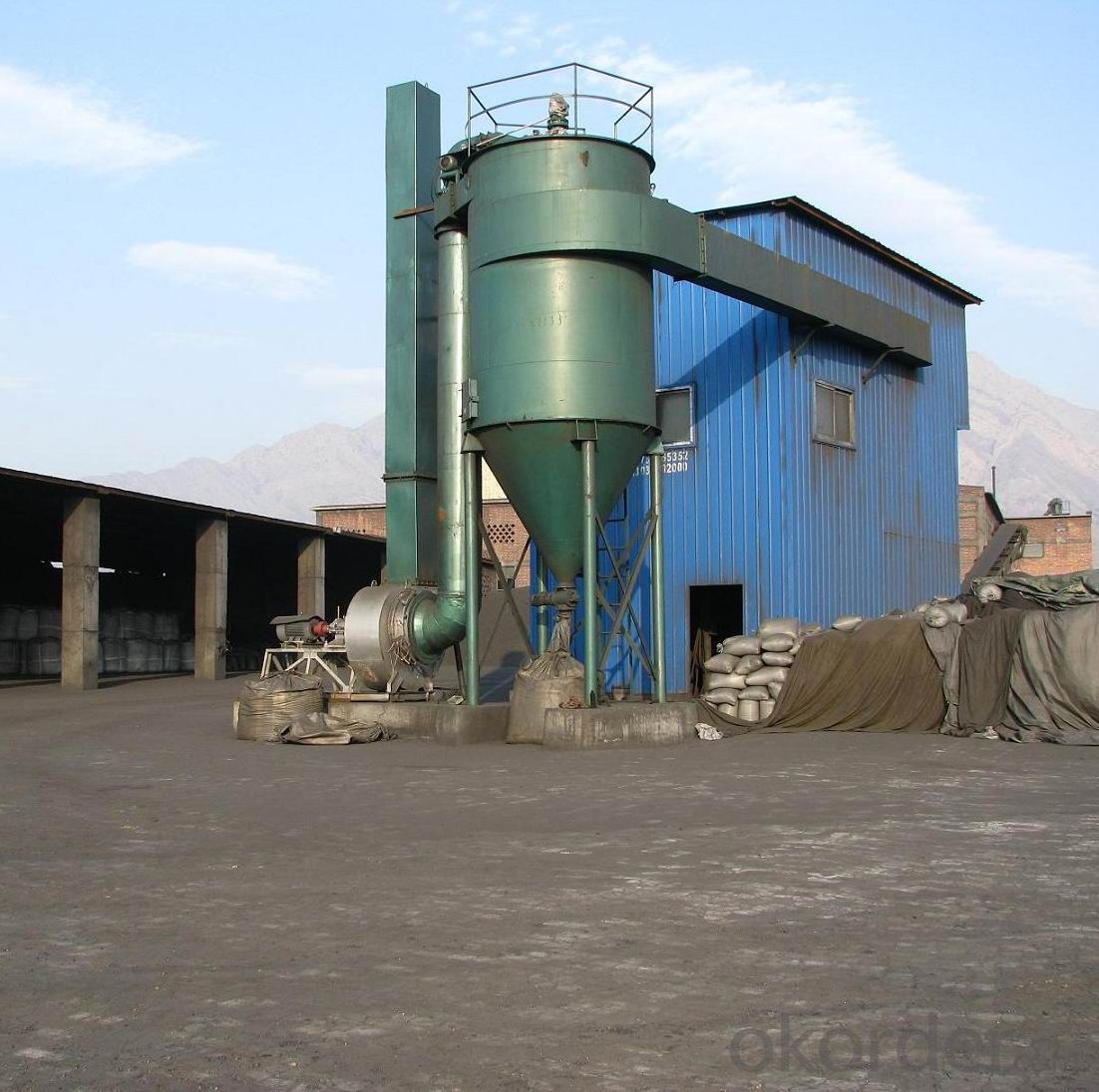Carbon Additve Recarburizer for Steelmaking
- Loading Port:
- Tianjin
- Payment Terms:
- TT or LC
- Min Order Qty:
- 20 m.t.
- Supply Capability:
- 10000 m.t./month
OKorder Service Pledge
OKorder Financial Service
You Might Also Like
Quick Details
Place of Origin: Ningxia, China (Mainland)
Application: steel making
Shape: granule
Dimensions: FC90-95%
Product Type: Carbon Additive
C Content (%): 90-95% MIN
Working Temperature: -
S Content (%): 0.5%MAX
N Content (%): -
H Content (%): 0.6%MAX
Ash Content (%): 8.5%MAX
Volatile: 2%MAX
ADVANTAGE: low ash & sulfur
COLOR: Black
RAW MATERIAL: TaiXi anthracite
Packaging & Delivery
| Packaging Details: | In 1MT plastic woven bag. |
|---|---|
| Delivery Detail: | 30-40DAYS |
Specifications
Carbon Additve Recarburizer for Steelmaking
Carbon Additve low Ash,S,P
FC>95% ASH<4% S<0.3%
It is made from TaiXi anthracite.
instead of pertrol coke reduce the cost
Structure
Carbon Additve Recarburizer for Steelmaking
Shape: granule
Dimensions: FC90-95%
Product Type: Carbon Additive
C Content (%): 90-95% MIN
Working Temperature: -
S Content (%): 0.5%MAX
N Content (%): -
H Content (%): 0.6%MAX
Ash Content (%): 8.5%MAX
Volatile: 2%MAX
ADVANTAGE: low ash & sulfur
COLOR: Black
RAW MATERIAL: TaiXi anthracite
Feature
Carbon Additve Recarburizer for Steelmaking
Specifications (%): | ||||||
Grade | F.C | Ash | V.M | Moisture | S | Size |
CR-95 | ≥95 | <4 | <1 | <1 | <0.3 | 0-30mm |
CR-94 | ≥94 | <4 | <1 | <1 | <0.3 | |
CR-93 | ≥93 | <6 | <1 | <1 | <0.4 | |
CR-92 | ≥92 | <7 | <1 | <1 | <0.4 | |
CR-91 | ≥91 | <8 | <1 | <1 | <0.4 | |
CR-90 | ≥90 | <8.5 | <1.5 | <2 | <0.4 | |
Image
Carbon Additve Recarburizer for Steelmaking
FAQ:
Carbon Additve Recarburizer for Steelmaking
Why we adopt carbon additive?
Carbon Additives used as additive in steel making process. It made from well-selected Tai Xi anthracite which is low in content of ash, sulphur, phosphorus, high heat productivity, high chemically activation.
Mainly industry property of it is: instead of traditional pertroleum coal of Carbon Additives, reduce the cost of steelmaking.
Advantage:
Carbon Additve Recarburizer for Steelmaking
1.High quality and competitive price.
2.Timely delivery.
3.If any item you like. Please contact us.
Your sincere inquiries are typically answered within 24 hours.
- Q:How to match?Want to breed a batch of roses seedlings, but the seedbed of mud, carbon soil do not know how to get, there is help in this regard...
- Five: sowing, that is, sowing and breeding in spring. Can also be seeding and furrow sowing, usually in mid April to germination. Spring planting and transplanting time autumn planting two, usually in late autumn or early spring before the leaves after the sap flow. Grafting grafting used multiflora rootstock, grafting and grafting of two points. Autumn budding survival rate, grafting position close to the ground as far as possible, the specific method is: in the side branch with rootstock grafting knife on the skin do "T" shaped incision, and then rose from the year growth of branches in a good selection of bud. Insert the bud into the "T" incision, then tie it with a plastic bag and shade properly so that it will heal in about two weeks. Plant ramets breeding more in late autumn or early spring, is the whole rose out of ramets soil, each plant has 1 to 2 branches and with some fibrous roots, the colonization in the basin or open, then can blossom. Cutting method in late autumn or early spring rose dormancy, their mature with 3 to 4 shoots cuttings. If the shoots are cut, shade properly and keep the seedbed moist. After cutting, the root can take root in 30 days, and the survival rate is from 70% to 80%. If the cuttings are dipped in the root, the survival rate will be higher. Layerage general in the summer, is the rose from parent branches bent down and pressed into soil, buried in the central branches, the lower half circle of the bark off, exposing branch end, the branches grow adventitious roots and grow new leaves, and then cut off the mother. As for the preparation of nutritious peat soil according to the following formula: two (1) mixture of peat mire soil and vermiculite, the proportion (by dry weight) for each 1/2 or 3/5:1/4; 2/5 or 3/4:1/4, then add the right amount of limestone (dolomite) and sandy fertilizer. (2) peat swamp soil 25-50%, vermiculite 0-25%, plus 50% of the soil. All of the above materials have been bought in the flower market.
- Q:How does carbon affect the quality of drinking water?
- Carbon can affect the quality of drinking water through two main mechanisms: activated carbon filtration and carbon dioxide (CO2) absorption. Activated carbon filtration is commonly used in water treatment processes to remove organic contaminants, chemicals, and odors, improving the taste and odor of drinking water. On the other hand, excessive dissolved carbon dioxide in water can make it acidic and affect the pH level, potentially making it corrosive and altering the taste. However, carbon itself is not harmful to human health and can be beneficial in certain forms, such as in the form of activated carbon filters.
- Q:What does "carbon neutrality" mean?
- This new term comes from English, "Carbon Neutral"". At present, there is no uniform and fixed name in Chinese, such as carbon neutral, carbon neutral, carbon footprint or carbon balance. Carbon neutrality is one of the modern efforts to slow global warming. The use of this environmentally friendly way, people calculate the CO2 emissions of their daily activities directly or indirectly, and calculate the economic costs to offset the carbon dioxide required, and pay for specialized enterprises or institutions, the amount of carbon dioxide by their corresponding trees or other environmental protection projects to offset the atmosphere.
- Q:What are the problems that should be paid attention to in the injection molding of the material? Who has some details about carbon fiber injection? Thank you for sharing
- Carbon fiber melting point at about 3000 degrees (isolation oxygen, oxygen, about 400 degrees will be oxidized), itself can not be injection processing, only carbon fiber filled plastic can be injection molding.
- Q:What are fossil fuels and how are they formed?
- Fossil fuels, derived from ancient plants and animals, are natural resources utilized by humans for centuries as non-renewable sources of energy. Coal, oil, and natural gas comprise the three primary types of these fuels. The genesis of fossil fuels commences with organic matter sourced from plants and animals. Over millions of years, this organic material becomes deeply buried within the Earth's crust. Through the accumulation of sediment layers, the organic matter experiences increased pressure and heat, resulting in the process of fossilization. Regarding coal, the organic matter primarily consists of compacted and heated plant material. As the pressure and temperature rise, the plant material undergoes a gradual chemical transformation, eventually becoming coal. The formation of oil and natural gas follows a slightly different path. It originates from the remains of minuscule marine microorganisms, such as plankton, which settle at the ocean floor. Over time, these organic materials become buried beneath sediment layers, where they endure immense heat and pressure. Under these conditions, the organic matter undergoes a conversion into a mixture of hydrocarbons, serving as the primary constituent of oil and natural gas. Subsequently, the oil and gas migrate through porous rocks until they become trapped by impermeable layers, giving rise to oil or gas reservoirs. Overall, the formation of fossil fuels constitutes a gradual geologic process taking millions of years. It necessitates specific conditions of heat, pressure, and burial to convert organic matter into coal, oil, or natural gas. Due to their limited availability and the environmental consequences associated with their combustion, there is an increasing emphasis on transitioning towards renewable energy sources as a more sustainable alternative.
- Q:What is carbon sequestration and how does it work?
- Carbon sequestration refers to the process of capturing and storing carbon dioxide (CO2) from the atmosphere to mitigate climate change. It works by removing CO2 emissions either directly from the source, such as power plants or industrial facilities, or indirectly by planting trees and restoring ecosystems that naturally absorb CO2. The captured CO2 is then stored underground, in depleted oil and gas fields, deep saline aquifers, or through mineralization processes. By reducing the amount of CO2 in the atmosphere, carbon sequestration helps to reduce greenhouse gas levels and slow the progression of global warming.
- Q:What are the consequences of increased carbon emissions on cultural heritage sites?
- Increased carbon emissions can have significant consequences on cultural heritage sites. One of the most immediate and visible impacts is the deterioration of physical structures and artifacts. Carbon emissions contribute to air pollution, which can result in the formation of acid rain. Acid rain contains high levels of sulfuric and nitric acids that can corrode and erode materials such as stone, metal, and paint. This can lead to the degradation and discoloration of historic buildings, monuments, and sculptures. Furthermore, carbon emissions contribute to climate change, resulting in more frequent and severe weather events such as hurricanes, floods, and wildfires. These extreme weather events pose a direct threat to cultural heritage sites, causing physical damage and destruction. For example, rising sea levels due to climate change can lead to the erosion of coastal archaeological sites, causing the loss of valuable historical artifacts and structures. In addition to the physical impacts, increased carbon emissions also pose a threat to the intangible aspects of cultural heritage. Climate change disrupts ecosystems and biodiversity, affecting the natural surroundings of cultural sites. This can lead to the loss of traditional knowledge, practices, and cultural landscapes that are closely linked to the heritage sites. Indigenous communities, for instance, may lose their ancestral lands and sacred sites due to changing environmental conditions. Moreover, cultural heritage sites often rely on tourism as a source of income and conservation funding. However, increased carbon emissions contribute to global warming, which in turn can lead to changes in travel patterns and preferences. This can result in a decline in tourist visits to cultural heritage sites, impacting local economies and hindering conservation efforts. Overall, the consequences of increased carbon emissions on cultural heritage sites are multi-faceted and wide-ranging. It is crucial to address and mitigate these emissions through sustainable practices and policies to protect and preserve our shared cultural heritage for future generations.
- Q:How is carbon involved in the metabolism of carbohydrates, proteins, and fats?
- Carbon is a fundamental element involved in the metabolism of carbohydrates, proteins, and fats. In all three macronutrients, carbon atoms play a crucial role in the formation of their molecular structures. In carbohydrates, carbon is present in the form of glucose, which is the primary source of energy for the body. Through a process called glycolysis, glucose is broken down into smaller molecules, generating ATP (adenosine triphosphate) for cellular energy. The carbon atoms in glucose are rearranged and converted into intermediate compounds that are further used in other metabolic pathways. Proteins, on the other hand, are complex molecules composed of amino acids, each containing a carbon atom. During protein metabolism, carbon atoms participate in various reactions, such as deamination and transamination, which allow for the synthesis of new proteins or the breakdown of existing ones. Carbon atoms also contribute to the formation of peptide bonds that link amino acids together, forming the backbone of proteins. In the metabolism of fats or lipids, carbon is predominantly found in the fatty acid chains. These carbon chains provide a high-energy fuel source, as they can be broken down through a process called beta-oxidation. Carbon atoms from fatty acids are sequentially cleaved, producing acetyl-CoA, which enters the citric acid cycle (also known as the Krebs cycle) to generate ATP. Additionally, carbon atoms from fatty acids can be used for the synthesis of other molecules, such as cholesterol and hormones. Overall, carbon is an essential component in the metabolism of carbohydrates, proteins, and fats. Its involvement in these metabolic processes allows for the production of energy, the synthesis and breakdown of essential molecules, and the regulation of various physiological functions.
- Q:How is carbon used in the production of paints and coatings?
- Carbon is commonly used in the production of paints and coatings as a pigment or filler. It can be derived from various sources, such as carbon black or activated carbon, and is added to paint formulations to provide color, opacity, and UV resistance. Additionally, carbon-based materials can be used as additives to enhance the durability, adhesion, and corrosion resistance of coatings.
- Q:Does anyone know what the definition of carbon storage is in ecology? Thank you
- If there is no clear definition of books on carbon storage in the understanding of ecology of the individual usually refers to the separation of gaseous carbon dioxide from the atmosphere, through the process of ecology carbon fixed, this process mainly refers to the plants convert carbon dioxide into carbohydrates.In addition, there is now another implication: carbon stripping technology will be used to collect carbon dioxide from human emissions into the air separation of the ground floor storage.
1. Manufacturer Overview |
|
|---|---|
| Location | |
| Year Established | |
| Annual Output Value | |
| Main Markets | |
| Company Certifications | |
2. Manufacturer Certificates |
|
|---|---|
| a) Certification Name | |
| Range | |
| Reference | |
| Validity Period | |
3. Manufacturer Capability |
|
|---|---|
| a)Trade Capacity | |
| Nearest Port | |
| Export Percentage | |
| No.of Employees in Trade Department | |
| Language Spoken: | |
| b)Factory Information | |
| Factory Size: | |
| No. of Production Lines | |
| Contract Manufacturing | |
| Product Price Range | |
Send your message to us
Carbon Additve Recarburizer for Steelmaking
- Loading Port:
- Tianjin
- Payment Terms:
- TT or LC
- Min Order Qty:
- 20 m.t.
- Supply Capability:
- 10000 m.t./month
OKorder Service Pledge
OKorder Financial Service
Similar products
New products
Hot products
Hot Searches
